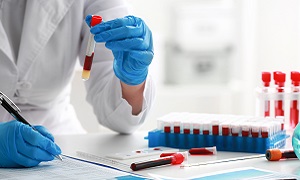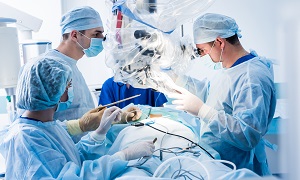Rheumatoid Arthritis
A chronic, inflammatory disorder affecting more than just joints is called rheumatoid arthritis. It can damage a wide variety of body systems in some people, like lungs, skin, heart, eyes and blood vessels. It is an autoimmune disorder that takes place when the immune system attacks its own body tissues mistakenly. The condition affects the lining of the joints. This causes a painful swelling resulting in joint deformity and bone erosion.
Causes of Rheumatoid Arthritis
When your immune system attacks the synovium (the lining of the membranes surrounding the joints), it causes rheumatoid arthritis. The synovium thickens due to the resulting inflammation that destroys the cartilage and bone within the joint. The ligament and the tendons hold the joint together. In rheumatoid arthritis, they weaken and stretch. The joint loses its shape & alignment because of this. Your genes don’t cause the disease but make you susceptible to environmental factors like an infection from bacteria and viruses which trigger the disease.
Symptoms of Rheumatoid Arthritis
The symptoms of rheumatoid arthritis may be:
- Joint stiffness that worsens in the morning or after an inactivity.
- Warm, tender and swollen joints.
- Fever, fatigue and loss of appetite.
In the initial stages, the disease affects the smaller joints, especially the joints attaching your fingers to the hands and the toes to the feet. With the progression of the disease, symptoms start spreading to the ankles, wrists, elbows, knees, shoulders, and hips. The symptoms may also occur on the same joints on both sides of the body in some cases. A significant number of people suffering from rheumatoid arthritis experience other signs and symptoms without the involvement of the joints. The disease may affect other non-joint structures like heart, skin, bone marrow, eyes, salivary glands, blood vessels, lungs, nerve tissue and kidneys.
The symptoms vary in severity and the person may or may not experience the symptoms at times. There might be a period of increased disease activity or a period of relative remissions when the pain and swelling disappear. The disease may cause the joints to reform and ultimately, shift from their place to some other.
Diagnosis of Rheumatoid Arthritis
The disease is difficult to diagnose initially. However, your doctor can check your joints for redness, swelling and warmth during physical examination along with checking the muscle strength and your reflexes.
Blood tests
People who suffer from rheumatoid arthritis experience increased ESR (erythrocyte sedimentation rate) or CRP (C-reactive protein). This indicates that an inflammatory process is present in the body. Other blood tests may include looking for the anti-cyclic citrullinated peptide (anti-CCP) antibodies or rheumatoid factor.
Imaging tests
Your doctor may ask you to take X-rays to aid in tracking the progression of the disease in the joints of your body over time. Ultrasound tests and MRI help your doctor understand the severity of rheumatoid arthritis in your body.
Treatment options for Rheumatoid Arthritis
Medications
- Steroids- Corticosteroid medications like prednisolone reduce pain, inflammation and slow down the damage to the joints. The side effects of these drugs include weight gain, thinning of bones and diabetes. Your doctor may prescribe corticosteroids to relieve the acute symptoms.
- NSAIDs- Non-steroidal anti-inflammatory drugs (NSAIDs) reduce the inflammation and relieve the pain in your body. Your doctor may prescribe stronger NSAIDs to you. The side effects of these drugs are heart problems, stomach irritation and kidney damage.
- DMARDs- Disease-modifying antirheumatic drugs slow down the progression of the disease while saving the joints and tissues from permanent damage due to rheumatoid arthritis. The most common disease-modifying antirheumatic drugs are leflunomide (Arava), methotrexate (otrexup, trexall), sulfasalazine (Azulfidine) and hydroxychloroquine (Plaquenil). The side effects of these drugs may be bone marrow suppression, liver damage and severe lung infections.
- Biologic agents- Biologic agents or biologic response modifiers are a new class of disease-modifying antirheumatic drugs and include adalimumab (Humira), baricitinib (Olumiant), etanercept (Enbrel), infliximab (Remicade), sarilumab (Kevzara), tofacitinib (Xeljanz), abatacept (Orencia), certolizumab (Cimzia), golimumab (Simponi), rituximab (Rituxan), tocilizumab (Actemra), and anakinra (Kineret).
They target some parts of the immune system triggering inflammation and causing joint & tissue damage. These drugs also increase the risk of infection. Biologic DMARDs are the most effective upon pairing with a nonbiologic DMARD like methotrexate.
Therapy
Surgery
Synovectomy
Synovectomy is performed on hips, knees, wrists, elbows and fingers; it removes the inflamed lining of the joint called synovium.
Tendon repair
Joint damage and inflammation cause the tendons around your joints to rupture or loosen. Your doctor will repair the tendons around the joints.
Joint fusion
Your doctor may recommend surgically fusing a joint to realign or stabilize a joint. It also relieves pain when joint replacement is not a favorable option.
Total joint replacement
Your doctor or surgeon may remove the damaged parts of the joint during the surgery and replace them by inserting a prosthesis made from plastic and metal.
Risks and complications
There is an equal risk of infection, bleeding and pain during surgeries. Your doctor may recommend the surgery best suited for you according to your condition and severity of the disease. You can also discuss the benefits and possible risks of each surgery before opting for one with your doctor.





